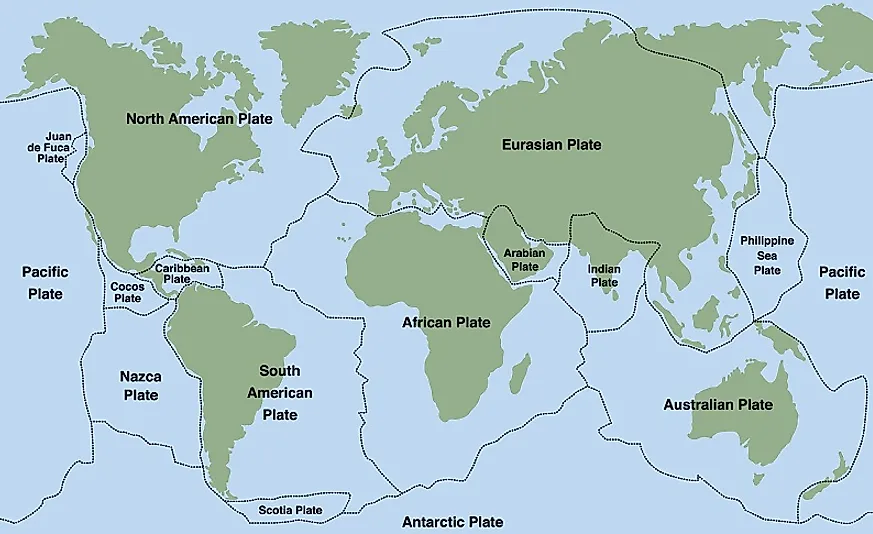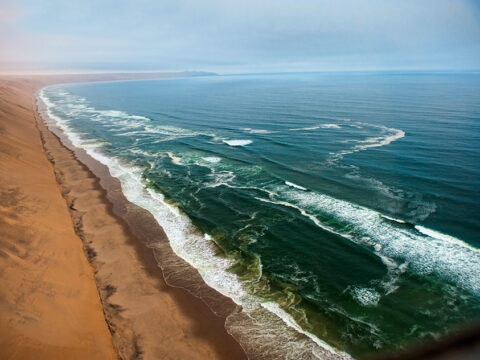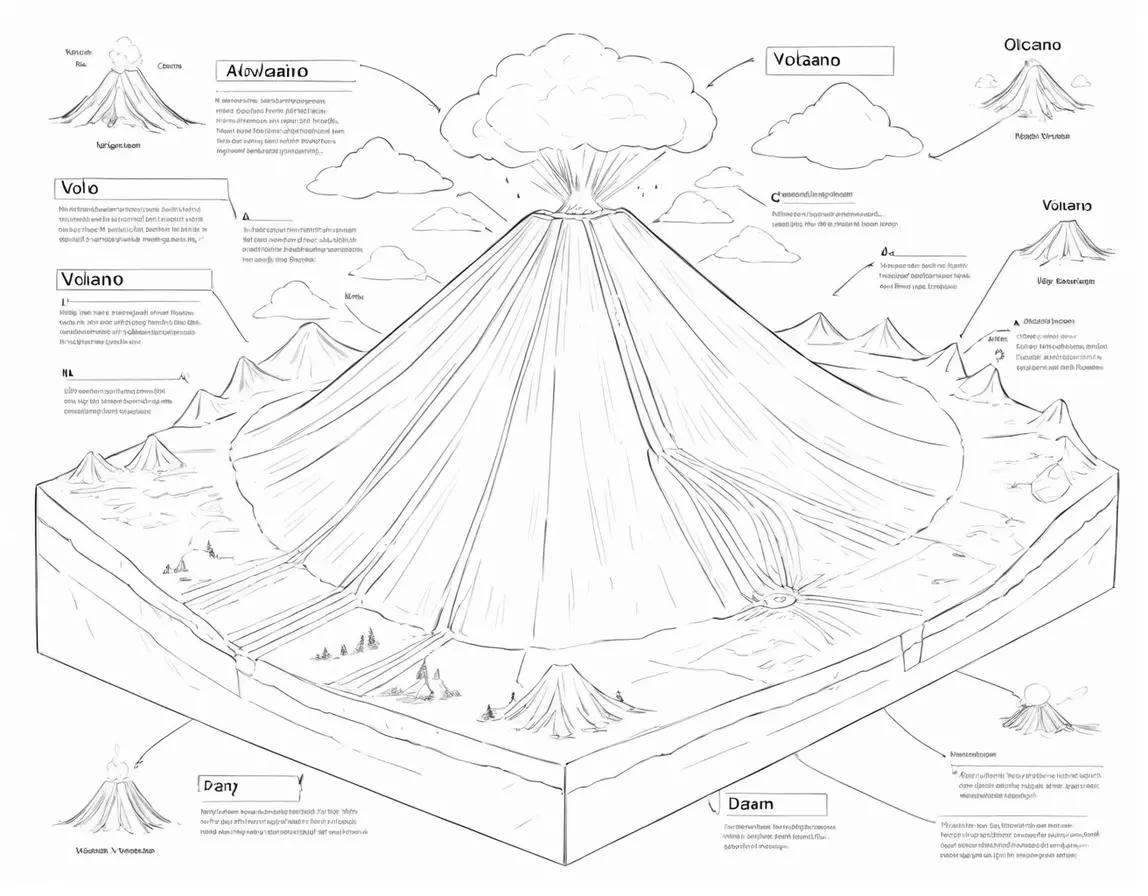
Climate is the long-term weather trend in a specific place. Weather patterns can shift from hour to hour, day to day, month to month, and even year to year. The weather patterns of a region, which are typically studied for at least 30 years, are called its climate.
THE CLIMATE SYSTEM
Climates differ in different places of the world. Some places of the world experience heat and rain almost every day. They have a humid tropical environment. Others are frigid and snow-covered for most of the year. They have polar weather. Many additional climates exist between the freezing poles and the steamy tropics, contributing to Earth’s biodiversity and geologic legacy.
The climatic system of a region determines the climate. The atmosphere, hydrosphere, cryosphere, land surface, and biosphere are the five major components of a climate system.
The most variable component of the climate system is the atmosphere. The composition and movement of gases surrounding the Earth can change dramatically as a result of natural and anthropogenic influences.
Temperature and salinity variations in the hydrosphere occur at far slower rates than changes in the atmosphere.
Another typically stable component of the climate system is the cryosphere. Ice sheets and glaciers reflect sunlight, and the thermal conductivity of ice and permafrost affects temperature significantly. The cryosphere also aids in the regulation of thermohaline circulation. The “ocean conveyor belt” has a significant impact on marine ecosystems and biodiversity.
TOPOGRAPHY
Topography and vegetation have an impact on climate by influencing how the Sun’s energy is utilized on Earth. Evaporation and ambient temperature are affected by the number of plants and the kind of land cover (such as soil, sand, or asphalt).
The biosphere, or the whole of living things on Earth, has a significant impact on climate. Plants help to regulate the flow of greenhouse gases in the atmosphere by photosynthesis. Forests and oceans operate as “carbon sinks,” lowering global temperatures. Living organisms change the landscape through natural growth as well as man-made structures such as burrows, dams, and mounds. Wind, erosion, and even temperature can be influenced by these transformed landscapes.
FEATURES OF THE CLIMATE
Average temperature and precipitation are arguably the most familiar aspects of a region’s climate. Changes in the day-to-day, day-to-night, and seasonal fluctuations also contribute to the identification of various climates. Windiness, humidity, cloud cover, air pressure, and fogginess are additional climate characteristics. Climate is heavily influenced by latitude. Landscape can also aid in the definition of regional climate. Elevation, proximity to the ocean or freshwater, and land-use patterns can all have an impact on climate.
Many factors influence climate, including latitude, elevation, topography, distance from the ocean, and continent position. The rainy, tropical climate of West Africa, for example, is impacted by the region’s proximity to the Equator (latitude) and placement on the continent’s western side. The location enjoys direct sunlight all year and is located in the intertropical convergence zone (ITCZ, pronounced “itch”), which is where moist trade winds meet. As a result, the climate in the region is warm and rainy.
MICROCLIMATES
Of course, no climate is consistent. Every climate region has little variances known as microclimates. Topographic characteristics such as lakes, vegetation, and towns have a big impact on microclimates. In large cities, for example, streets and buildings absorb heat from the Sun, boosting the city’s average temperature above that of more open places nearby. This is referred to as the “urban heat island effect.”
Microclimates can exist in large bodies of water, such as the Great Lakes in the United States and Canada. Cities on Lake Ontario’s southern shore, for example, are cloudier and receive more snow than cities on the northern shore. The “lake effect” is caused by chilly winds blowing over warmer lake water.
CLASSIFICATION OF CLIMATE
Charles Thornthwaite, an American climatologist, devised a climate classification system that scientists still use today in 1948. Thornthwaite’s method is based on the water budget and potential evapotranspiration of a region. The amount of water evaporated from a vegetated piece of land is referred to as potential evapotranspiration. Humidity and precipitation are two indicators that help define a region’s moisture index. The lower the moisture index number, the drier the climate.
Thornthwaite’s climatic categorization has three major classifications: microthermal, mesothermal, and mega thermal.
Cold winters and little potential evapotranspiration characterize microthermal climates. Most geographers limit the word to the northern hemispheres of North America, Europe, and Asia. The moderate climate of Boston, Massachusetts, the coniferous forests of southern Scandinavia, and the boreal environment of northern Siberia are all examples of microthermal climates.
Climates in mesothermal zones are mild. They are not cold enough to support a coating of winter snow, but they are also not warm enough to support flowering plants (and so evapotranspiration) throughout the year. The Mediterranean Basin, most of coastal Australia, and the Pampas region of South America all have mesothermal climates.
Megathermal climates are extremely hot and humid. These areas have a high moisture index and abundant vegetation all year. The Amazon Basin, several Southeast Asian islands like as New Guinea and the Philippines, and the Congo Basin in Africa all have meg-athermal climates.
KÖPPEN CLASSIFICATION SYSTEM
Although many climatologists believe the Thornthwaite system is an effective and thorough method of identifying climate, it is complex and difficult to map. Outside of scientific publishing, the system is rarely used.
Wladimir Köppen, a Russian-German scientist, established the most widely used climate classification system in 1900. Köppen discovered that the type of plant in a location was heavily influenced by climate. He and other scientists established a technique for designating climate areas by studying vegetation, temperature, and precipitation data.
The Köppen climatic classification system divides the world into five climate zones: tropical, dry, moderate, continental, and polar. These climate categories are subdivided further into climate types. The following is a list of climatic groupings and types:
Tropical
Wet (rainforest)
Monsoon
Wet and dry (savanna)
Dry
Arid
Semiarid
Mild
Mediterranean
Humid subtropical
Marine
Continental
Warm summer
Cool summer
Subarctic (boreal)
Polar
Tundra
Icecap
Tropical Climates
Tropical climates are classified into three types: tropical wet, tropical monsoon, and tropical wet and dry.
RAINFORESTS IN THE TROPICAL WETLANDS
Rainforests are areas that have a tropical wet environment. Warm temperatures and consistent rainfall characterize the weather in these equatorial regions. The annual rainfall exceeds 150 cm (59 inches), and the temperature fluctuates more during the day than it does throughout the year.
Just before sunrise, temperatures range from 20° to 23° Celsius (68°-73° Fahrenheit). Afternoon temperatures often range between 30° and 33° Celsius (86° and 91° Fahrenheit). Rainforests have limited seasonal variation, hence average monthly temperatures remain fairly steady throughout the year.
Tropical wet climates exist in a 10° latitude area on either side of the Equator. The intertropical convergence zone is always present in this section of the world. Throughout the year, the ITCZ maintains a pendulum-like movement, swinging back and forth across the Equator with the seasons. It moves north in the summer and south in the winter in the Northern Hemisphere.
Some tropical wet climates have rain all year. Others get greater rainfall in the summer and winter, but no particularly dry seasons. Areas having tropical wet climates include Hawaii in the United States, Kuala Lumpur in Malaysia, and Belém in Brazil.
THAILAND’S MONSOON
Southern Asia and West Africa have the most tropical monsoon climates. A monsoon is a wind system that changes direction once every six months. Monsoons typically flow from the sea to the land in the summer and from the land to the sea in the winter.
Summer monsoons provide heavy rains to tropical monsoon zones. People living in these areas rely on seasonal rains to water their crops. Monsoon weather patterns are well-known in India and Bangladesh.
SAVANNA, A TROPICAL WET AND DRY LAND
Tropical wet and dry climates are often known as “savanna” climates, after the grassland environment that is typified by wet and dry seasons.
Tropical wet and dry climates are found near the Equator, just outside the ITCZ. They have three distinct seasons. When the warm, wet ITCZ is in the other hemisphere, one season is chilly and dry. As the ITCZ approaches, another season of heat and aridity begins. The final season is hot and humid as the ITCZ arrives and the region sees months of tropical rainy weather.
Life in these tropical wet and dry regions is dependent on the rains during the wet season. People and animals suffer from drought during years when rainfall is few. Flooding may occur in areas during very rainy years. The wet and dry tropics can be found in Havana, Cuba, Kolkata, India, and Africa’s huge Serengeti Plain.
CLIMATES DRY
The dry climatic group includes areas with little precipitation. There are two sorts of dry climates: arid and semiarid. Most dry climates receive 10 to 30 centimeters of rain per year (four to 12 inches), while semiarid climates receive enough to support large grasslands.
Temperatures in both dry and semiarid climates vary greatly on a daily and seasonal basis. Arid climates have the world’s hottest places. On July 10, 1913, the temperature in California’s Death Valley National Park reached 56.7° Celsius (134° Fahrenheit), the highest ever recorded.
Although rainfall is limited in all arid areas, there are a few places where it never rains. The Atacama Desert of Chile, on South America’s west coast, is one of the driest locations on the planet. Some parts of the Atacama Desert may have never seen rain in recorded history.
Semiarid locations, such as Australia’s outback, often receive 25 to 50 centimeters (10-20 inches) of rain each year. They are frequently found between the desert and tropical climate zones.
Mountains can hinder the circulation of warm, moist air, resulting in arid and semiarid climates. Denver, Colorado, located immediately east of the Rocky Mountains in the United States, has this sort of dry climate, described as a “rain shadow.”
LITTLE CLIMATES
Temperate zones are those with mild and continental climates. Both types of climate have separate cold seasons. Climate in certain sections of the world is mostly impacted by latitude and a region’s position on the continent.
MEDITERRANEAN
Summers in the Mediterranean region are pleasant, with short, mild, rainy winters. Mediterranean climates can be found on the western coastlines of continents between 30° and 40° latitude, as well as along the Mediterranean Sea’s shores. Summers in the Mediterranean are distinguished by clear skies, cool evenings, and little rain.
SUBTROPICAL HUMIDITY
Subtropical humid climates are typically located on the eastern borders of continents. Summers in Savannah, Georgia, in the United States; Shanghai, China; and Sydney, Australia, are hot and humid. Winters can be bitterly chilly. Precipitation falls evenly throughout the year and ranges from 76 to 165 centimeters (30-65 inches). In these areas, hurricanes and other powerful storms are common.
West Coast Marine
As latitude increases, the weather on both sides of a continent generally cools.
CLIMATES AROUND THE WORLD
Continental regions have colder winters, longer snowfalls, and shorter growing seasons. They are the zones that exist between warm and polar climates. Seasonal shifts are extreme in continental regions.
Continental climate zones have a wide variation of weather, making them some of the most dramatic locations for weather events. For example, in the autumn, enormous forests put on their annual display of spectacular color before dropping their leaves as winter approaches. Thunderstorms and tornadoes, two of nature’s most violent forces, originate primarily in continental regions.
Warm summer, cold summer, and subarctic climates are the three types of continental climates. All of these climates can only be found in the Northern Hemisphere. Continental climates are typically found in the interiors of continents.
SUMMER IS WARM
Wet summer seasons are common in warm summer temperature zones, similar to monsoon climates. As a result, this climate type is sometimes known as humid continental. Summers in most of Eastern Europe, including Romania and Georgia, are warm.
PERFECT SUMMER
The winters in cool summer climates are cold and snowy. Winter weather is dominated by cold winds blowing in from the Arctic. People who live in these climates have gotten accustomed to the cold, but others who are unprepared may suffer. Many of Napoleon Bonaparte’s men, for example, were accustomed to France’s temperate Mediterranean climate. Thousands perished in the severe cold as they fled Russia’s cool summer environment in the winter of 1812.
SUB-ARCTIC
Subarctic climates exist north of locations with chilly summer weather. These areas, which include northern Scandinavia and Siberia, have lengthy, cold winters with limited precipitation. Subarctic climates are sometimes known as boreal climates or taiga climates.
GLOBAL CLIMATES
The two polar climate types, tundra and ice cap, are found near the North and South Poles in the Arctic and Antarctic Circles.
TUNDRA
Summers in tundra climes are brief, but flora and animals are plentiful. In July, temperatures can reach 10° Celsius (50° Fahrenheit). Wildflowers carpet the terrain, and migratory birds feast on insects and fish. Whales feed on minute invertebrates in the frigid, nutrient-rich waters of the region. For thousands of years, people have adapted to living on the tundra.
THE ICE CAP
Few creatures can survive in the Arctic and Antarctic ice caps. Even in the summer, temperatures rarely get above freezing. The ever-present ice contributes to the chilly weather by reflecting the majority of the Sun’s energy back into the atmosphere. The skies are largely clear, and precipitation is at a minimum. In truth, Antarctica, which is covered by a 1.6-kilometer (one-mile) thick ice covering, is one of the world’s largest and driest deserts.
CLIMATES AT HIGH ELEVATIONS
Over the years, many geographers and climatologists have made changes to the Köppen classification system, notably geographer Glen Trewartha, who established a category for high-elevation climates.
There are two types of high-elevation climate: upland and highland. Temperatures and precipitation levels range greatly between highland and upland regions. Climbing a high mountain or reaching a plateau can feel like traveling to the poles. The climate of some mountains, such as Mount Kilimanjaro in Tanzania, is tropical at the base and arctic at the summit. The climate at high elevations frequently varies from one side of the mountain to the other.
CLIMATE INFLUENCE
The tremendous variety of life on Earth is largely attributable to the various temperatures that exist and past climate variations. Climate has had an impact on the evolution of cultures and civilizations. People all throughout the world have adapted to their surroundings in unique ways.
CHANGE IN CLIMATE
Climate, unlike weather, does not change from day to day, but it does change over time. Paleoclimatology is the study of historical climatic change.
Climate change occurs gradually over hundreds or thousands of years. Periodic glacial periods, for example, have covered significant areas of the Earth with ice caps. Some paleoclimatology data suggests that during a warm “wet age,” the Sahara Desert was once covered with plants and lakes.
Climate change can occur for a variety of reasons. Climate is affected by tectonic plate movement, volcanic activity, and the tilt of the Earth’s axis. For example, after the 1883 eruption of the Indonesian island volcano Krakatoa, winters and even summers in Asia and Europe became colder and darker. The sun was obscured by volcanic ash. Farmers were forced to adapt to shorter, poorer growing seasons. For years, climates all across the world have been changing.
The “Little Ice Age” was a period of climate change that lasted from the 12th through the 19th centuries. The Little Ice Age was not a true glacial epoch, but rather a description of colder weather all across the world. Canals in the United Kingdom and the Netherlands were frequently frozen solid, allowing for ice skating. European colonists in North America described very hard winters.
WARMING OF THE EARTH
Human activity has begun to influence climate since the 19th century’s Industrial Revolution. Climate change is sometimes referred to as “global warming.” Global warming is frequently associated with an out-of-control “greenhouse effect.”
The greenhouse effect is the mechanism through which certain gases (such as carbon dioxide (CO2), methane, nitrous oxide (N2O), fluorinated gases, and ozone) trap solar energy in the lower atmosphere of a planet. Greenhouse gases allow the sun’s light to reach the Earth’s surface while trapping the heat that is reflected back up into the atmosphere. In this way, they function similarly to greenhouse glass walls.
The greenhouse effect is a natural phenomenon that maintains the Earth warm enough for life to exist. However, human activities such as the use of fossil fuels and the destruction of forests emit greenhouse gases into the atmosphere at an unparalleled rate. Rising temperatures, melting glaciers, and more extreme weather events have all been observed throughout this time of climate change.
The current phase of climate change is also related to the major glaciers, ice sheets, and sea ice retreats. Warmer temperatures have reduced Montana’s Glacier National Park’s glaciers from 150 in 1850 to only 26 now. As a massive part of the Larsen C ice shelf fell off the Antarctic Peninsula in 2017, one of the largest icebergs ever recorded entered the ocean.
Warmer ocean temperatures and warmer ambient air temperatures are thought to have contributed to the ice shelf’s breakup and the enormous Antarctic ice sheet connected with it. Finally, both the extent and thickness of Arctic sea ice have decreased substantially in recent decades. The legendary Northwest Passage, which connects the North Atlantic and North Pacific ocean basins, is now routinely ice-free and safe for cruise ships to pass.
Melting glaciers and ice sheets, as well as saltwater expansion as temperatures rise, have all contributed to historic sea level rise. Every year, the sea level increases by around 2.3 millimeters (0.2 inches), causing up to 900% more frequent flooding in coastal areas.
Temperature rises can alter climate impacts and even the categorization of a location. Low-lying islands, for example, may be swamped when sea levels rise. People in island nations like the Maldives and Comoros have been compelled to consider becoming “climate refugees”—people forced to abandon their homes and migrate to another location.
The interplay of many weather systems may be exacerbated by heat in the atmosphere. Droughts may be prolonged by unusually arid weather in a semiarid location, for example. The higher atmospheric moisture associated with humid climates may enhance the likelihood of hurricanes and typhoons in locations with mild climates.
Climate change is also having an effect on creatures and species ranges. Organisms that have acclimated to one climate may need to migrate or adapt to a warmer climate. Manatees, for example, are tropical-water marine mammals. Manatees have started migrating as far north as New York City, New York, as temperatures rise. Polar bear populations, on the other hand, are expanding southward as Arctic sea ice shrinks.
Reduced greenhouse gas emissions can help to reduce climate change. This can include investing in new technology, relying more on renewable energy sources, retrofitting older equipment to be more energy-efficient, or altering customer behavior.


















